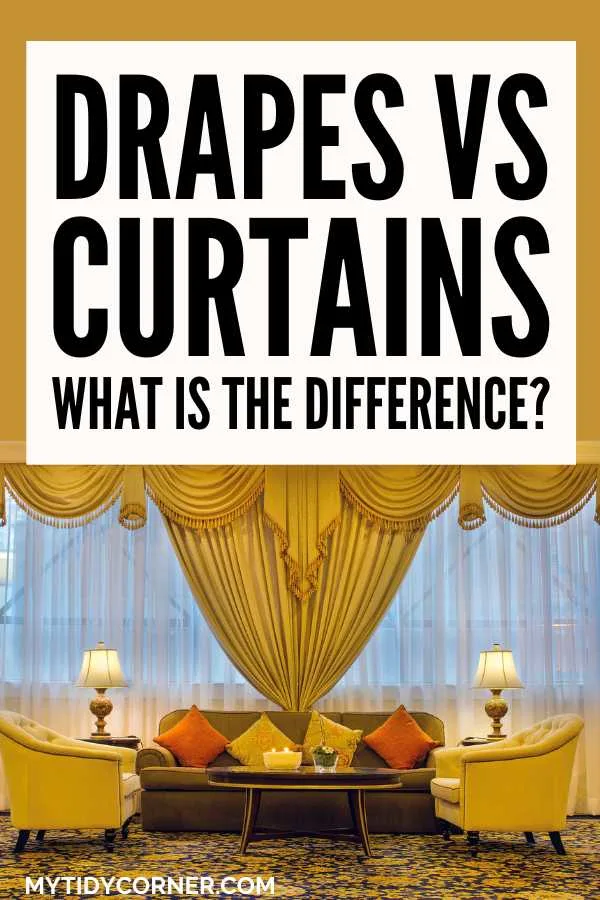Drapes Vs Curtains – What is the Difference?
Let’s look at the difference between curtains and drapes and when you should use one or the other.
Until I entered the world of interior design, I used the words “curtains” and “drapes” interchangeably. Now I know better and have learned to distinguish between the two window treatments. Today I’d like to share the difference between drapes and curtains.
The primary difference between curtains and drapes is in the fabric. Curtains are made of light-weight fabric, so they are best for sunny rooms requiring little privacy and a casual look. Drapes are elegant, made of heavily lined velvet or damask. They block light and sound and insulate rooms.
Most of us agree that curtains and drapes are those long pieces of fabric we hang in front of windows to keep out the sun’s glare, our neighbors’ noses, and the outside chill.
That much is true. But there are also some differences between the two, so let’s look at how they differ.

Related Articles:
- What is the Difference Between Thermal and Blackout Curtains?
- Curtains Vs Blinds – Which is Better?
- Unlined Vs Lined Curtains – Which Option is Right for Your Home?
- How to Cover Windows Without Curtains
What’s the Difference Between Curtains and Drapes?
Although these two window treatments seem to serve the same purpose, some differences make one more suitable for a specific function, style, or ambiance. Let’s begin by defining what curtains and drapes are.
What are Curtains?
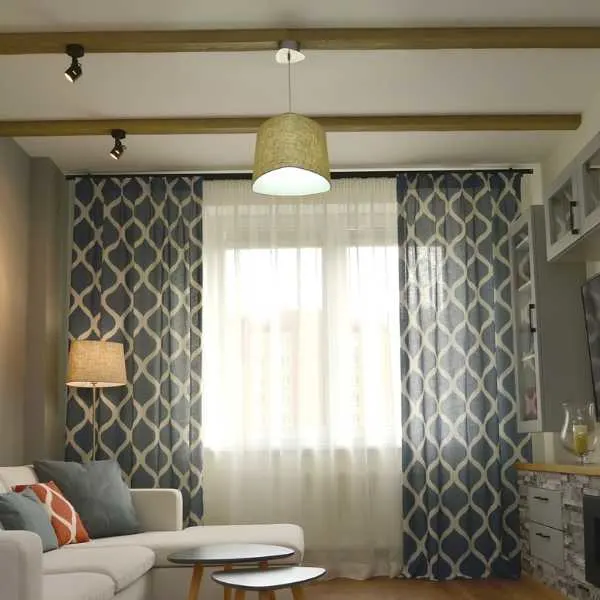
Curtains are soft window coverings made of panels of light-weight, unlined fabric. They hang from a curtain rail or pole, using hooks or rings. The curtain headers may be pleated or gathered or have eyelets, tabs, or knots attached to the pole.
Installed in single or double panels, flanking a window or door, curtains are easily pulled aside and fastened with tie-backs to let in light or pulled together to cover the window.
You can hang curtains right above the window or nearer to the ceiling to create the impression of height. They may reach the floor or the window sill or cover one section of the window as café curtains, depending on whether you want a casual or formal look.
The functions of curtains are to filter light, maintain privacy, and add to aesthetics through color and texture.
Drapes
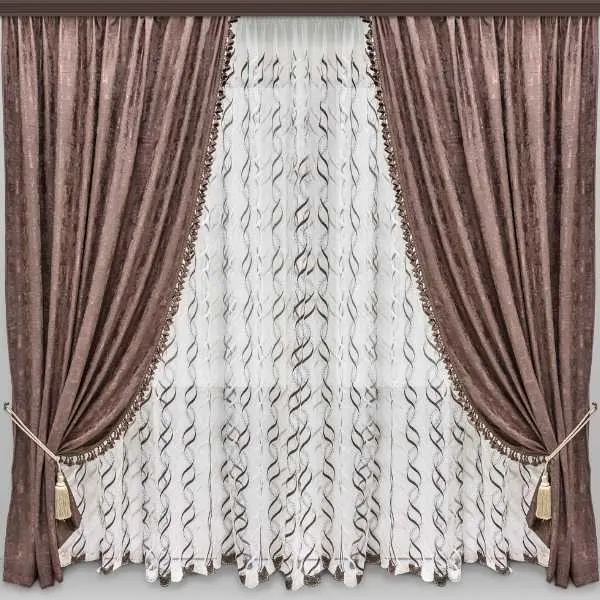
Drapes or drapery are also a kind of window covering made of fabric panels and hung from a curtain rod or drapery pole using hooks or rings. However, the fabric panels are far more substantial, often luxurious, and always lined.
The headers of drapes tend to be tailored or finished in some way, whether with pinch, pencil, or box pleats. Valances and swags enhance the elegance of drapery.
You can install single-panel drapes, but you are more likely to install double or multiple panels across several windows. Decorative tie-backs, cornices, and poles work well with formal drapes.
Drapes are ideal for effectively blocking light, sound, and heat and are excellent for maintaining privacy. They are also a sophisticated and splendid window treatment with a formal aesthetic.
Which is Better: Curtains or Drapes?
Curtains and drapes are both functional, attractive window treatments. Your choice depends on the ambiance you want to create, how much you spend on fabric, customization, and maintenance, and whether you need curtains to block light, sound, or passersby.
Fabric
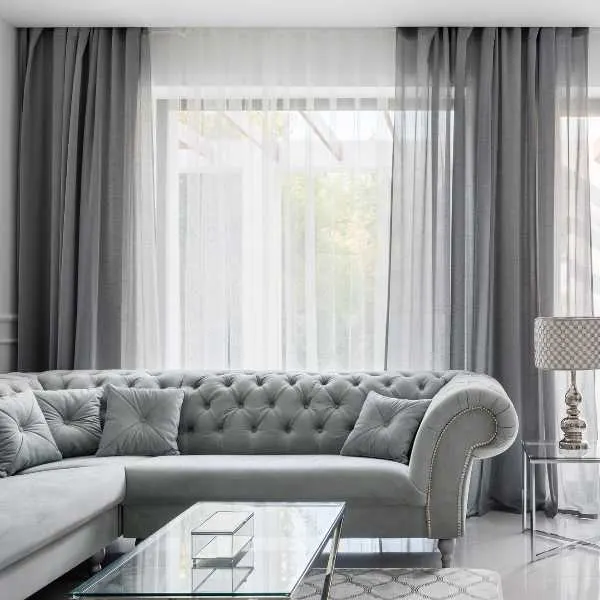
The immediate difference between the two window treatments is the fabric used in their construction.
Curtains are made of light-weight, sheer, or semi-sheer fabric, such as polyester, cotton, linen, gauze, muslin, or net, and are generally unlined. They are ideal for casual, informal spaces and work well with Boho, coastal, farmhouse, cottage-core, and rustic aesthetics. Choose curtains for kitchens, bathrooms, and family rooms.
Drapes are far heavier, made from richer fabrics, like velvet, silk, damask, or brocade. They are often lined, making them even weightier and frequently pleated.
These fabrics suit formal, elegant, and luxurious aesthetics, such as traditional, glamorous, and colonial styles. They are also heavy enough to block light and sound. Choose drapes for bedrooms and formal living and dining rooms.
However, because of their complex construction, drapery needs to be custom-made, with expert measurement of dimensions and choice of fabrics.
Length
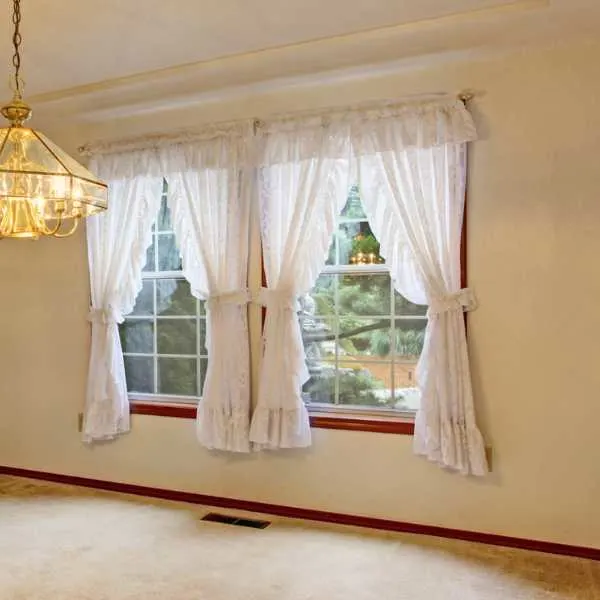
A second crucial difference between drapes and curtains is their length.
Curtains come in a variety of lengths: they may be one-pane high café curtains, sill-length, apron-length, or full-length. Shorter lengths are very informal, letting in more light and air.
Drapes, however, are always floor-length or longer, either breaking a couple of inches on the floor or creating a dramatic flowing puddle. Longer lengths are more formal, while curtains that pool on the floor are ideal for sophisticated interiors.
Functionality
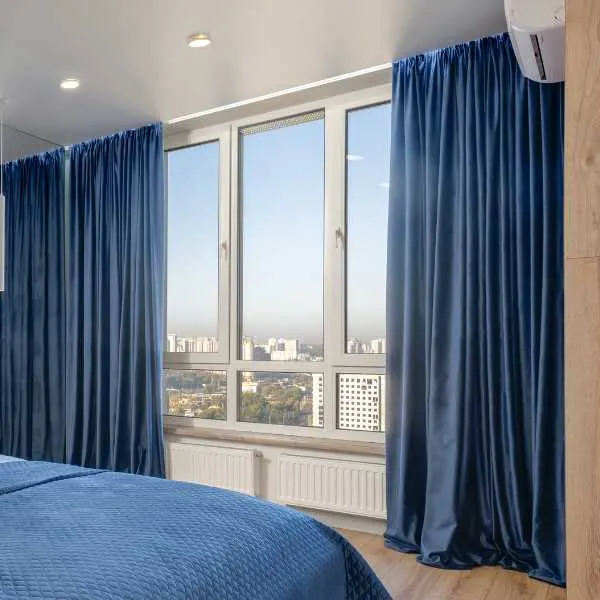
The three main functions of curtains and drapes are maintaining privacy, blocking light, and adding to a room’s aesthetic appeal.
Because they aim to filter rather than block out light, curtains are made of light-weight and thin fabrics. This allows air to move around a room, perfect in warmer climates. Thicker curtains will also provide some privacy without sacrificing beautiful, natural light.
Curtains are, therefore, good for kitchens and dining rooms, where you don’t need privacy or darkness for sleeping, resting, or watching TV. Combine curtains with blinds for better light blocking.
Drapes are made of heavier fabric, which hangs closer to the window and down to the floor, so they are ideal for light-blocking and privacy. They have the added advantages of insulating a room, keeping it warm, and reducing energy bills.
Drapes also offer some sound reduction because of their weight and solid lining, especially if you choose polyester.
These functions make drapes the best choice for bedrooms, family rooms, and living rooms.
In terms of aesthetics, the two window treatments come in various styles and fabrics, so they can create a stunning impression and fit with most interior styles. Generally, curtains suit a casual aesthetic, while drapes are formal, sophisticated, and elegant.
Maintenance

Because of their different fabrics, curtains and drapes have different maintenance requirements.
Curtains are usually light-weight, meaning they can be taken down and put up more easily. They are often washable, so you can clean them at home.
However, drapes are often made from dry-clean only fabrics and linings that require professional cleaning. They are also difficult to install and remove, so it is a job best left to the experts. In addition, floor-touching drapes get dirty more easily. This makes maintaining drapes more expensive.
Price
The fabric and construction of curtains and drapes influence their cost.
Made of light-weight, unlined material, curtains are far less expensive. Their finishings are less elaborate; you can pick them up ready-made for good prices. Of course, the fabric you choose can increase the cost.
Drapes are not only made of more expensive fabrics but also require more to be bought to allow for pleating, gathering, and fullness. The lining must also be purchased. Many finishings are hand-sewn and customized. Drapes will be more expensive than curtains but will last longer if you choose durable fabrics and an experienced seamstress.
Final Thoughts on the Difference Between Drapes and Curtains
While drapes and curtains are similar, their fabric influences their functionality and the effect they create. Curtains are far lighter, more informal, and allow in light and air, while drapes are heavier, formal, and block light and sound.
Did you find our post on the difference between curtains and drapes helpful? Leave your comment below.
